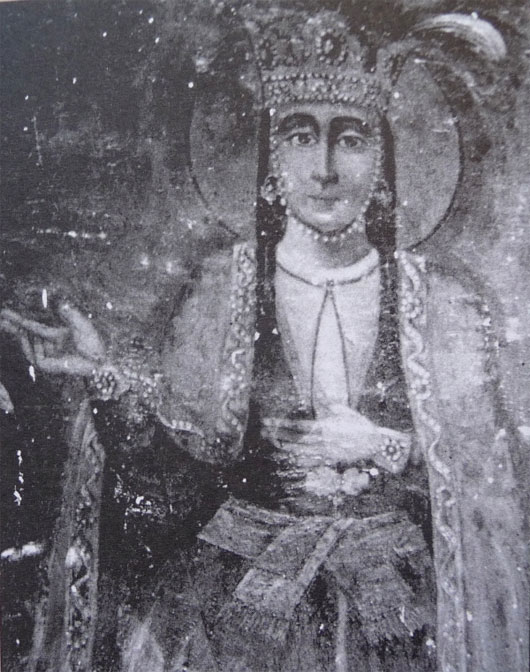Detected the missing body of the executed queen
The remains of a woman stored in a church in India are more likely to belong to a Georgian queen who was executed 400 years ago, according to a new DNA study.
The results of DNA analysis revealed, the newly discovered remains were found by Queen Ketevan, wife of King Kakheti in Georgia in the 1600s. After her husband was killed and the country fell into the hands of Persian King Shah Abbas I , Mrs. Ketevan became a prisoner of the invaders.
Queen Ketevan was ill and emaciated in Shiraz, Iran, for nearly a decade after that. However, in 1624, King Shah Abbas asked her to convert from Christianity to Islam and become his concubine.
Because the Emperor Ketevan appealed, the King of Persia sent soldiers to torture and execute her on September 22, 1624. Not long after that, the Georgian Orthodox Church canonized Ms. Ketevan.

Photo: Wikimedia Commons
Mitochondrion magazine quoted Niraj Rai, a researcher from the Center for Molecular and Cell Biology in Hyderabad, India, who said that before his death, Queen Ketevan had become friends with two St. Augustine monks. those who are very devoted to her. Legend has it that, in 1627, these two monks secretly extracted the queen's remains and took them out of Iran.
An old Portuguese document recorded, Queen Ketevan's bones were kept in a black stone casket, hidden in the window of St. Augustine Convent in Goa, India.
After centuries, a part of the monastery has collapsed and many valuable objects have been sold out. The first attempts to find the queen's remains have failed.
However, starting in 2004, researcher Rai and his colleagues unearthed the area they believed contained the remains of Mrs. Ketevan. They eventually found a piece of broken arm bone and two other pieces of bone, as well as pieces of black boxes.
To determine if the bone fragments belonged to Ketevan, the researchers extracted DNA that was only found in the cytoplasm of the egg and was passed on to the mother.
The results showed that the arm bone belonged to a woman with a genetic line U1b. While the survey of 22,000 people in the Indian subcontinent did not detect anyone with the genetic line U1b. In contrast, this genetic line is relatively common in a sample of 30 people from Georgia.
Two other pieces of bone provide evidence that they belong to common genetic lines in India, reinforcing documents that suggest that Queen Ketevan's remains are stored in the same place as the bones of the two monks. direction.
- 9 quirky queens in world history
- Discovered two missing ships from the 19th century when searching for MH370
- The life of the Queen is immersed in Thanh
- Shocking hypothesis about the gender of Queen Elizabeth I
- Friendship story: The Queen and Queen of China give up the title, looking for greenery
- Unbelievable privileges when you are ... Queen of England
- November 17, 1858 - The Queen of the Virgin of England crowned
- The only black queen in Chinese history
- What will the Queen's daily food have?
- Lost legs of the 3,000-year-old Egyptian queen
- Found missing pilots and bombers nearly 80 years ago
- The most beautiful, bohemian queen of France
 Discovered an ancient centipede fossil 99 million years old
Discovered an ancient centipede fossil 99 million years old Discovered bat-like dinosaurs in China
Discovered bat-like dinosaurs in China Discovered a 200-year-old bronze cannon of the coast
Discovered a 200-year-old bronze cannon of the coast Discover 305 million-year-old spider fossils
Discover 305 million-year-old spider fossils